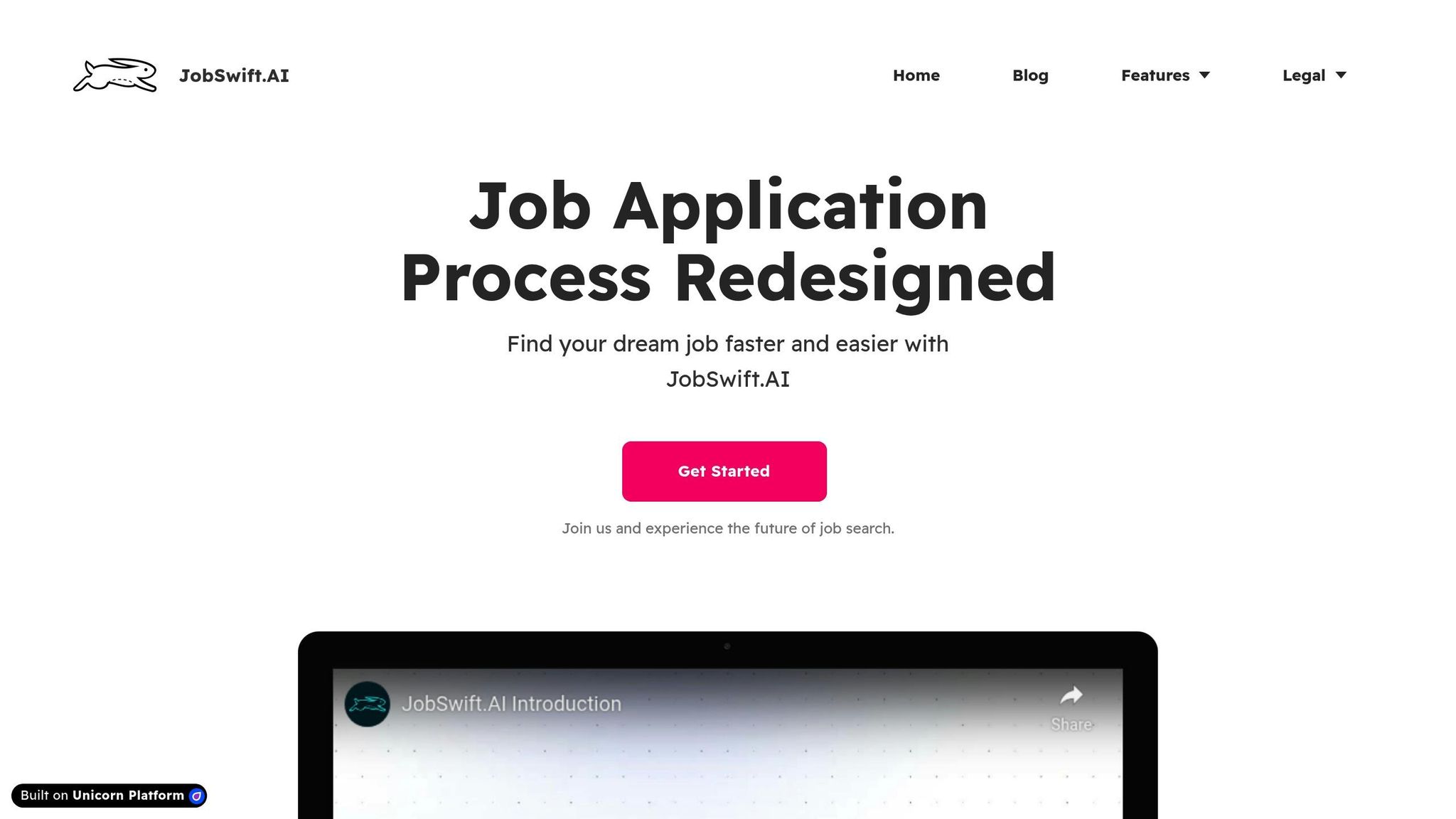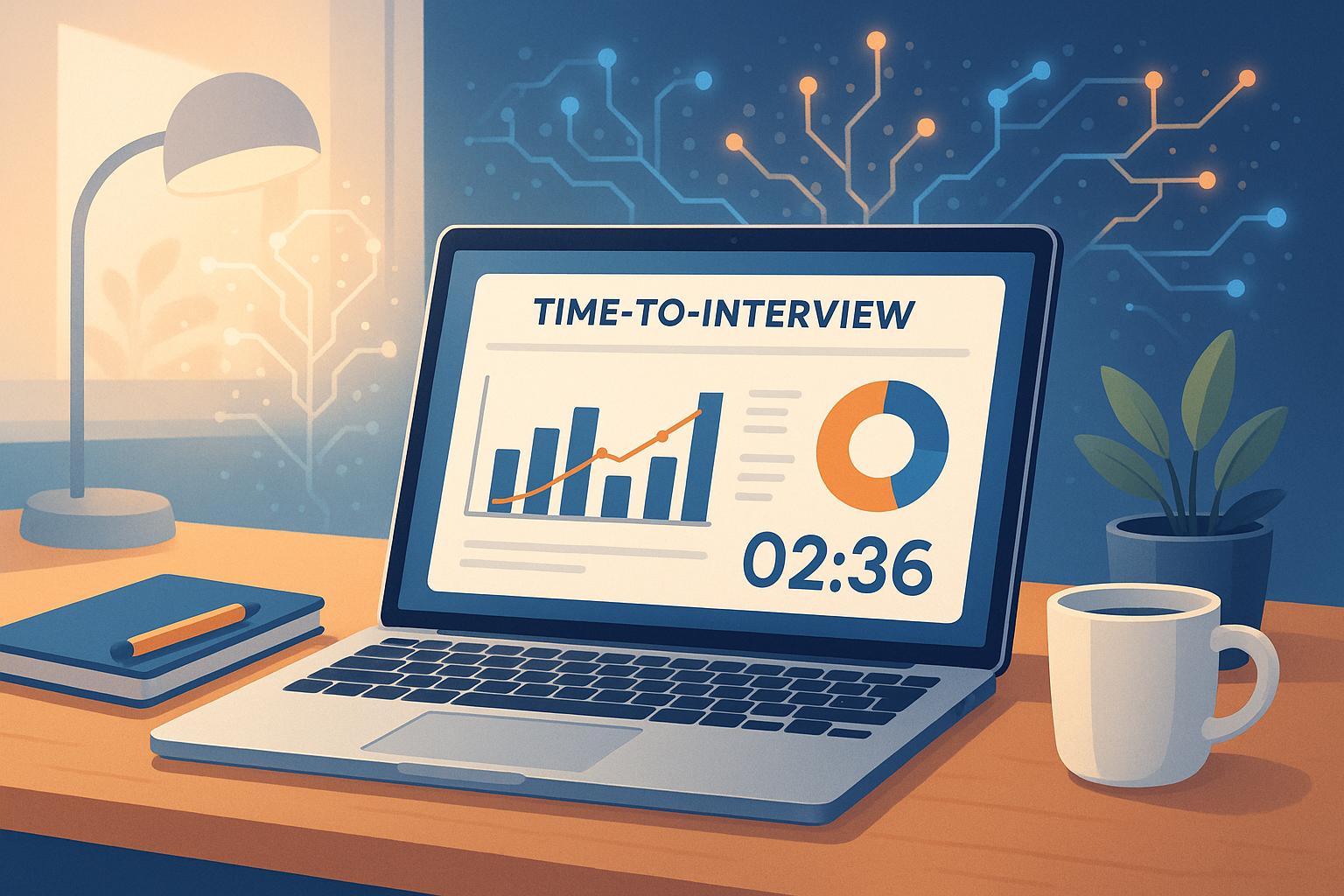Real-time compensation data is transforming how salaries are negotiated by offering up-to-date insights instead of relying on outdated annual surveys. Here's why it matters:
- Real-Time Data vs. Traditional Surveys: Real-time data is updated continuously through automated HR systems, providing current and accurate salary benchmarks. Traditional surveys, however, are updated annually and prone to delays and errors.
- Why It’s Important: With wage growth expected to exceed 3.5% in 2025 and 19 states mandating pay transparency, accurate salary data is now essential for job seekers and employers.
- For Job Seekers: Real-time data helps negotiate better salaries, identify high-paying skills, and plan career moves with confidence.
- For Employers: AI-powered tools enable dynamic benchmarking, skill-based analysis, and competitive pay strategies.
Quick Comparison
| Aspect | Traditional Surveys | Real-Time Data |
|---|---|---|
| Update Frequency | Annual | Continuous |
| Data Collection | Manual submission | Automated HR systems |
| Data Accuracy | Prone to errors | More reliable |
| Relevance | Months old | Current |
Real-time compensation data is a game-changer for understanding market trends, negotiating salaries, and staying competitive in today’s job market.
How Much Do Data Analysts ACTUALLY Make? | salary, career, tech
Data Collection and Analysis Methods
Today's advanced data systems provide real-time compensation insights, helping individuals and organizations make better decisions about careers and pay. Let’s break down the key sources that power this dynamic ecosystem.
Main Data Sources
Traditional surveys remain the backbone of compensation data, covering 70–80% of employees. However, other sources are also shaping the landscape:
| Data Source | Characteristics | Reliability |
|---|---|---|
| Traditional Surveys | Detailed and systematic | High (industry standard) |
| Job Postings | Reflect current salary ranges | Medium-High |
| HRIS Systems | Employer-provided data | High |
| Crowdsourced Data | User-submitted information | Medium |
| Economic Indicators | Tracks market trends | High |
AI Processing Systems
AI-powered platforms are transforming compensation management. These systems boast impressive results, such as achieving 99.8% on-time commission payments and cutting overpayments by 90%. The influence of AI is particularly noticeable in technology-related roles. For example:
- IT manager median salaries jumped by $10,000 (8.7%) in just two months as of April 14, 2025.
- Manufacturing roles have also benefited, with workers skilled in predictive maintenance seeing a 17% salary increase.
Market Updates and Adjustments
AI-driven insights allow for real-time adjustments to compensation strategies, ensuring organizations stay competitive in fast-changing markets. Here’s how it works:
-
Dynamic Benchmarking
This method captures rapid shifts in compensation trends. For instance, in fast-moving talent markets, pay rates can fluctuate by as much as 25% during traditional benchmarking cycles. -
Multiple Data Integration
Companies using a mix of traditional and real-time data are 2.3 times more competitive when attracting critical talent."Traditional survey data and real-time data each offer its own unique value. Having both tools in the toolbox and knowing how and when to weave them together gives compensation teams a fresh perspective and a competitive edge needed to keep up in this ever-changing market." - Patrick Conner, Solutions Consultant, BetterComp
-
Skills-Based Analysis
Modern systems monitor the demand for emerging skills and their effect on pay. For example, the demand for Generative AI skills surged by 2,500% last year, with professionals earning a median salary of $122,752.
These tools and strategies provide job seekers and employers with the clarity needed to navigate the evolving compensation landscape effectively.
Advantages for Job Seekers
Access to real-time compensation data has become a game-changer for job seekers, helping them negotiate salaries, assess the value of their skills, and plan their careers with a sharper focus.
Better Salary Negotiations
Having up-to-date market data can significantly enhance salary discussions. In fact, 82% of young leaders rely on AI-driven insights to guide their negotiations. Platforms like JobSwift.AI equip job seekers with the tools they need to negotiate with precision.
| Negotiation Element | How Real-Time Data Helps |
|---|---|
| Market Position | Confirms your current value based on skills and experience |
| Competitive Edge | Delivers accurate salary ranges by industry and location |
| Timing | Highlights the best moments to discuss compensation |
| Value Proposition | Supports salary requests with solid market evidence |
Siobhan Bermingham from Scotwork explains the broader impact of data-driven insights:
"With AI algorithms analysing vast amounts of data, providing both HR teams and staff with employee performance and progress, identifying skills gaps and recommending personalised professional development plans, HR staff will be empowered to clearly demonstrate staff development and execute meaningful conversations supported by data and structured career development paths, which in turn is expected to improve retention."
This confidence in data also helps job seekers pinpoint the skills that can maximize their earning potential.
Finding High-Paying Skills
Focusing on skills that are in demand is a smart strategy for career growth. Around 67% of job seekers view salary competitiveness as a top priority when evaluating job offers. Companies that use compensation benchmarking tools have been able to improve both pay equity and competitiveness by 35%.
Several factors influence which skills command higher salaries, including:
- Industry demand
- Regional salary variations
- Levels of expertise
With this information, job seekers can better position themselves in the job market. These insights naturally lead to a deeper understanding of salary trends, which is essential for informed career planning.
Salary Trend Analysis
Wage growth is on the horizon, with LaborIQ forecasting an increase of over 3.5% by 2025. Real-time data not only helps professionals navigate market fluctuations but also takes advantage of pay transparency laws, which have boosted employee engagement by 32%. Given that the average job tenure is 3.9 years, staying informed about compensation trends is crucial for long-term career success.
Enrique Esclusa, Co-Founder and Co-CEO of Assemble, underscores the importance of viewing market data as one piece of the puzzle:
"Companies must view market data for what it is: a factor that informs a broader decision-making process, not the sole determining factor that dictates decisions."
sbb-itb-96bfd48
Common Data Usage Issues
Real-time compensation data can be incredibly useful, but it comes with its own set of hurdles. Both employers and job seekers need to understand and address these challenges to make informed decisions.
Data Quality Control
Small mistakes in compensation data can have big consequences. For instance, studies show that even a 1% error rate in incentive compensation data can result in incorrect bonuses for the entire workforce.
| Data Quality Challenge | Impact | Solution |
|---|---|---|
| System Inconsistencies | Leads to mismatched salary ranges | Conduct regular data validation |
| Human Input Errors | Produces incorrect compensation figures | Use automated verification tools |
| Outdated Benchmarks | Reflects inaccurate market rates | Update data quarterly |
| Job Matching Issues | Causes incorrect role comparisons | Implement detailed role mapping |
Data Privacy Standards
Protecting compensation data has become more critical than ever due to recent security breaches. In 2023, Activision experienced a major incident when a hacker accessed employee salary data using an SMS phishing attack on their HR team. Similarly, H&M faced a €35.3 million fine for collecting excessive personal information about employees and their families.
To comply with privacy regulations like GDPR, CPRA, and LGPD, companies need to prioritize:
- Strong encryption methods
- Secure data storage
- Strict access controls
- Regular system updates
While privacy is a key concern, the sheer volume and volatility of compensation data also create unique challenges.
Managing Data Complexity
Real-time compensation data is constantly changing, making it difficult to establish reliable benchmarks. To tackle this complexity, organizations can adopt the following strategies:
| Strategy | Purpose | Implementation |
|---|---|---|
| Data Governance | Ensure data quality | Evaluate data providers quarterly |
| Blended Analysis | Gain well-rounded insights | Combine external data with internal metrics |
| Regular Reviews | Stay aligned with the market | Conduct quarterly benchmarking |
| Role Definition | Improve job matching accuracy | Focus on job descriptions rather than just titles |
Companies that adopt these strategies have reported a 35% improvement in achieving pay equity and maintaining competitiveness. However, it’s worth noting that free online salary databases often contain unverifiable or outdated information. These platforms may also lack context, such as detailed job descriptions, which can lead to skewed results.
JobSwift.AI Salary Tools

JobSwift.AI takes real-time compensation data and turns it into practical tools for job seekers. These tools empower professionals to make well-informed decisions about their pay by providing clear, actionable insights.
Salary Data Analysis
With access to over 40 million employer-reported job postings, JobSwift.AI delivers up-to-date salary ranges. Its AI system combines data from multiple sources to generate precise insights:
| Data Component | Analysis Method | Output |
|---|---|---|
| Base Salary | Tracks market trends | Current pay ranges |
| Merit Bonuses | Uses forecasting models | Bonus estimates |
| Sales Incentives | Benchmarks industry standards | Commission data |
| Pay Equity | Applies data science techniques | Equity metrics |
By factoring in location, experience, and industry trends, the platform offers recommendations tailored to individual users. This analysis also supports detailed comparisons across the job market.
Market Rate Comparison
JobSwift.AI's comparison tools help users understand their market value by analyzing key factors:
| Comparison Type | Insights Provided | Update Frequency |
|---|---|---|
| Industry Benchmarks | Role-specific salary ranges | Updated regularly |
| Geographic Analysis | Location-based pay differences | Quarterly updates |
| Experience Levels | Salary trends by career stage | Monthly updates |
| Skill Premium | Value of specific qualifications | Bi-weekly updates |
To ensure data accuracy, the platform syncs with HR and payroll systems.
Salary Negotiation Tips
Armed with detailed salary data and market comparisons, JobSwift.AI also prepares users for successful salary negotiations. Interestingly, while 70% of managers expect candidates to negotiate, 58% of job seekers rarely or never take that step.
"When asking for additional compensation, be sure to provide one to two solid examples of why the company should invest more in you." - Kate Palmquist, HR Professional
JobSwift.AI offers data-driven strategies to help users confidently negotiate. These include leveraging market analysis, assessing skills, evaluating benefits, and preparing counteroffers. The platform’s predictive analytics also tracks market trends and identifies the best times for negotiations, ensuring users stay ahead of the curve.
Conclusion
Main Points
Currently, only about 12% of online job postings in the US include salary ranges. But with the rise of real-time compensation data and AI-powered tools, professionals now have a clearer picture of their market value. This shift empowers individuals to negotiate with confidence, backed by solid data, and to make informed career decisions.
"If you have the ability to know what salary is being offered and know what others are earning, then you are in a position to advocate for yourself." – Laurie Berke-Weiss, Principal Attorney at Berke-Weiss
This kind of transparency not only levels the playing field but also fosters more productive hiring conversations. Candidates can focus on opportunities for growth and alignment with company values rather than worrying about hidden salary gaps. These principles form the foundation for using real-time data effectively in salary negotiations.
Getting Started
Ready to put these strategies into practice? Here's a quick roadmap to get started:
| Phase | Action Items |
|---|---|
| Research | Use BLS data and industry surveys as benchmarks |
| Analysis | Compare your role to current market rates |
| Planning | Define your target salary range |
| Execution | Build a negotiation plan and practice delivery |
By combining traditional survey data with real-time insights, you can stay ahead in the job market. Keep in mind that the best time to dive into compensation research is during the first half of the year, as over 85% of companies conduct salary reviews during this period.
For those looking to streamline the process, platforms like JobSwift.AI offer tools to simplify compensation research. At $39.99/month (with free trial options), their AI-driven analysis helps job seekers save time while gaining a clear understanding of their worth in the market.
"Including pay ranges in job postings allows job seekers to determine whether they will be able to support themselves and their family when they apply for a job." – Helen Rosenthal, Former City Council Member
FAQs
How can real-time compensation data help job seekers negotiate better salaries?
Real-time compensation data offers job seekers a powerful advantage when it comes to salary negotiations. Unlike traditional surveys that often rely on outdated or broad information, real-time data provides the most current salary benchmarks tailored to specific roles, industries, and locations.
Armed with this up-to-date information, candidates can approach negotiations with confidence, ensuring their salary expectations reflect their skills, experience, and the job’s demands. By grounding discussions in accurate, market-relevant figures, job seekers can clearly communicate their value and avoid undervaluing themselves. This approach not only strengthens their position but also increases the likelihood of reaching fair and successful agreements.
What challenges come with using real-time compensation data, and how can they be solved?
Real-time compensation data can be a powerful tool, but it’s not without its hurdles. One major challenge is that this data can sometimes be outdated or inaccurate, as it often leans on historical trends that may not align with today’s market realities. This mismatch can result in misleading salary decisions or even pay inequities. On top of that, the sheer volume of available data can be overwhelming for HR teams, making it difficult to pinpoint actionable insights.
To tackle these challenges, organizations should focus on data validation to ensure the information they rely on is both accurate and relevant. Using advanced analytics tools can help sift through the noise and make sense of the data, enabling HR teams to craft fair and competitive compensation strategies. Additionally, regularly revisiting and updating pay structures while keeping a close eye on market trends can ensure salary decisions remain aligned with current conditions.
How can employers combine real-time compensation data with traditional salary surveys to improve their pay strategies?
Employers can build smarter pay strategies by combining real-time compensation data with traditional salary surveys. Real-time data provides up-to-the-minute insights into market trends, allowing businesses to adjust quickly to shifts in salary expectations and stay competitive. For instance, analyzing salary details from current job postings can offer a more accurate benchmark for pay rates.
On the other hand, traditional salary surveys, while dependable, often don't reflect the latest market conditions. By blending these surveys with real-time data, employers can tackle pay equity challenges, boost transparency, and ensure their compensation plans align with both immediate demands and long-term trends. This approach not only promotes fairer pay practices but also strengthens the ability to attract and keep top talent.


